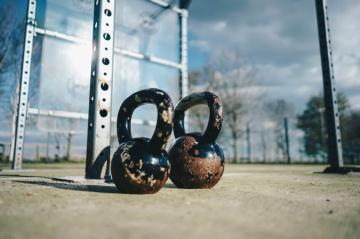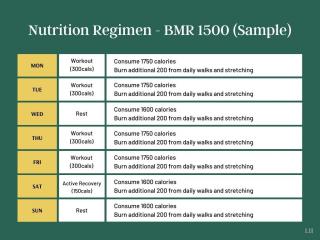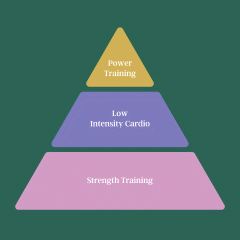Back in our younger days, we were probably avid runners. Running track and cross country could be an easy task for some, while some even joined 5k mud runs or color runs for great causes. These days, however, all that high-impact running has taken a toll on our knees. This is why you’ll love power walking!
Here are some of the benefits.
What Is Power Walking?
Power walking, or speed walking, is more than just a brisk walk. When power walking, you walk at a speed at the upper end of the natural pace for walking. A normal walking pace for most is 3 mph, so for power walking, aim for anywhere between 4 to 5.5 mph.
Power walking requires that you have at least one foot in contact with the ground at all times. This means that if you are standing still, you will not be able to walk at a normal pace.
During power or speed walking, your heart rate increases. The number of calories burned by power walking can be the same as running without all the high impact on your joints!
Power Walking vs. Running
Running can provide you with many health benefits, and it is one of the cheapest ways to exercise compared to other types of workouts. Its intensity promotes fitness and efficiently burns more calories than other activities. However, running is a high-impact exercise that can frequently lead to injuries if you’re not careful, and it won’t do much in developing your upper body.
Runners can be at a particular disadvantage because they can develop numerous injuries quickly from all the impacts on their feet, knees, ankles, and other joints, such as:
⌄ Scroll down to continue reading article ⌄
⌄ Scroll down to continue reading article ⌄
Shin splints Plantar fasciitis Stress fractures Achilles tendonitisPower Walking vs. Jogging
Power walking or speed walking, on the other hand, is different from running, jogging, or traditional walking because of its increased intensity emanating from arms movement, longer strides, and a faster pace. This allows you to get all the benefits of running without the abovementioned disadvantages.
Hidden Benefits of Power Walking
It’s just so amazing that power walking is a form of exercise that requires no expensive equipment, no special athletic ability, no apps or technology, and no gym membership.
Power walking can be done in any open area, and it’s easy to do. Let’s take a look at why you should start power walking now.
1. Improved Cardiovascular Health
Power walkers have increased heart rates, especially when done at a moderate to high-intensity level. Exercise that boosts your heart rate is excellent for combatting heart disease and other chronic illnesses such as diabetes and cancer.
According to the American Cancer Society, a new observational study shows that taking more steps each day – even if you walk at a regular pace – is linked with living longer.
Power walking puts a higher demand on your cardiovascular system because it requires more steps per minute and more involvement from your major muscle groups.
If you are new to working out, starting with a regular walk can help ease into a new routine. Walking at any pace will still help you burn calories and improve your cardiovascular fitness, and when you are ready, you can increase your pace to power walking levels.
⌄ Scroll down to continue reading article ⌄
⌄ Scroll down to continue reading article ⌄
2. Reduced Risks
Power walking at 4.5 mph for an hour would burn the same amount of energy as a 30-minute run without all the impact on your joints. Making power walking the perfect exercise for individuals of all ages and fitness levels.
While power walking and regular walking work the quadriceps, hamstrings, calf muscles, and hip abductors, power walking also tones the shoulders, upper back, and glutes!
Power walking helps burn calories while toning your muscles more than a regular walk would. It is even a great core workout. The more intense you move your arms during power walking, the more you can engage your entire body, challenging your balance and stability.
According to the Mayo Clinic, a regular brisk walk can help you maintain a healthy weight and lose body fat.
3. Improved Bone Health
Power walking is also good for your bones. A recent study in the American Journal of Preventative Medicine found an hour per day of moderate-intensity exercise like power walking prevents disability in people who have symptoms of joint problems in their lower extremities.
The faster, farther, and more frequently you walk, the greater the benefits!
How to Power Walk
It’s important that you use proper form and posture while power walking. This helps to prevent injury and ensures you can keep up the proper pace. You want to ensure you’re using the proper muscles in the right way to turn the energy you’re expending into steps and calories burned rather than risk rolling an ankle or tweaking a knee.
Keeping proper posture is always important while walking, but when power walking, it’s especially important. Your eyes should look ahead, your shoulders should be back, and your head should be upright. Set your gaze about 20 feet ahead, and don’t slump forward.
If you realize your posture is off or you’re slumping forward, correct your posture right away, even if it means slowing down. The better posture you can maintain, the faster you can walk, and the more steps you can get.
Take some time to work on your posture because proper posture allows you to walk faster and tire less quickly.
Starting Your Routine
If you’re new to exercise or increasing the intensity of your walks. Start slowly and gradually—and you’ll still get great benefits from it. Try this interval walking plan to get started. Exertion is rated from level 1 to 10, with 1 being in a rested state and 10 being on the verge of breathlessness.
Pyramid Style
This simple interval session gradually builds in intensity to a peak, then eases back down.
5-minute warmup walk (level 5) 5-minute typical walk (level 6) 4-minute brisker than usual walk (level 7) 2-minute fastest possible walk (level 8) 4-minute brisker than usual walk (level 7) 5-minute typical walk (level 6) 5-minute cool-down walk (level 5)Always speak to your primary care physician before starting a new exercise routine.
How Much and How Often?
When it comes to any exercise routine, the duration and intensity depend on your schedule. Ideally, 30 minutes of power walking 3 days per week is a great starting point.
⌄ Scroll down to continue reading article ⌄
⌄ Scroll down to continue reading article ⌄
Walking at a steady state can get boring, and it also limits the calories you can burn. Adding in intervals can burn more calories during and after your workout by increasing your excess post-exercise oxygen consumption.
There’s no wrong way to do interval training. You can increase your pace for a certain number of minutes or a certain distance. For example, pick a landmark in the distance, like a stop sign, and walk at a faster pace where talking becomes difficult until you get to it. Then, keep alternating that way between easy and harder efforts. Or, you could walk with exaggerated arm movements, like holding your hands overhead, until you get to the landmark.
For an extra challenge, you can do power walking hill sprints. Walk at a comfortable pace to a nearby hill, then walk at an effort where it’s hard to talk up the hill, and recover at an easy pace downhill and repeat. Just keep in mind that you don’t have to go all out at once.
Tips for Implementing a Power Walking Routine:
To get the most out of power walking, consider these tips:
Get the right gear: Unlike running shoes, which may be slightly thicker at the heel, your shoes should have good arch support and a flat sole. Make sure you’re visible: Walk on a path or sidewalk where you’re safe from traffic. If you’re walking at dusk or in the dark, use reflective tape or clothing, or bring a flashlight. Make it fun: Walk with a friend or colleague. Walk somewhere you find beautiful and restorative. Walk while listening to music you like – just make sure you can also hear traffic sounds. Do whatever makes it fun for you! Know the terrain: To keep from falling, notice uneven sidewalks, tree roots, and other obstacles.The Bottom Line
If you haven’t tried power walking or speed walking, now is the time to give this low-impact, effective exercise a try. This go-anywhere exercise is great for all fitness levels. The reduced risks of joint deterioration and injury make it more appealing to most age groups.
If you want to stay fit, become fit, or get back at getting fit, adding this movement to your exercise regime today will be a great investment in your body!
Featured photo credit: Sincerely Media via unsplash.com
⌄ Scroll down to continue reading article ⌄
⌄ Scroll down to continue reading article ⌄





























































